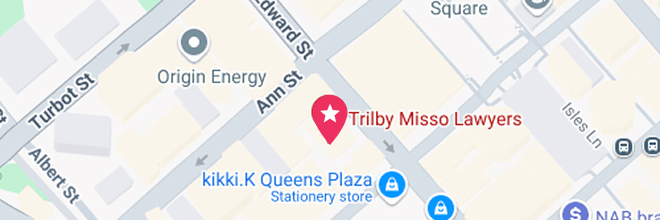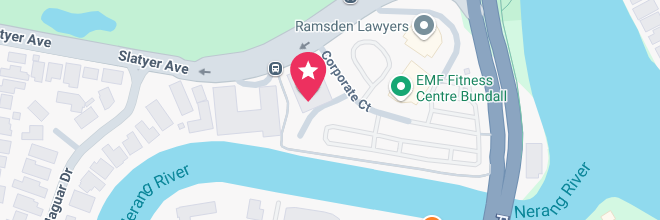Our Brisbane CBD Office
- Suite 400, Level 4/288 Edward St, Brisbane City QLD 4000
- (07) 3910 5470




Pain and Suffering Damages: A Comprehensive Guide by Personal Injury Lawyers in Brisbane
When accidents or negligence cause physical and emotional harm, individuals often seek compensation to recover not only economic losses but also non-economic damages like pain and suffering. If you or someone you know has been injured in Queensland, understanding how pain and suffering damages are assessed and claimed can make a significant difference in your case. Personal injury lawyers in Brisbane specialise in guiding clients through this complex area of law, ensuring fair compensation for the hardships endured.
In this detailed guide, we’ll explore everything you need to know about pain and suffering damages, focusing on how claims are handled in Brisbane under Queensland’s legal framework.
What Are Pain and Suffering Damages?
In Queensland personal injury claims, pain and suffering and loss of amenities of life are components of what is commonly referred to as general damages. These are non-economic damages meant to compensate for the intangible impacts of an injury. Here’s a breakdown:
Pain and Suffering
This refers to the physical and emotional distress caused by the injury. It includes:
Loss of Amenities of Life
This focuses on how the injury has diminished your ability to enjoy life or partake in activities you previously enjoyed. Examples include:
The Legal Framework for Pain and Suffering Damages in Brisbane
In Queensland, pain and suffering claims are governed by the Civil Liability Act 2003 (Qld) and the accompanying Civil Liability Regulation 2014. These laws establish a structured system for assessing general damages, ensuring fairness and consistency in compensation.
The Injury Scale Value (ISV) is the cornerstone of calculating pain and suffering damages in Queensland. The ISV assigns a numerical value between 0 and 100 to injuries based on their severity. This value determines the compensation range for each type of injury.
Each ISV range corresponds to a monetary limit, ensuring that compensation remains proportional to the injury’s severity. The Civil Liability Regulation 2014 provides tables that outline these limits, ensuring uniformity in how damages are awarded.
The Injury Scale Value (ISV) tables in Queensland list a wide range of injuries across different categories to help determine compensation for general damages in personal injury claims. The ISV tables are governed by the Civil Liability Regulation 2014 (QLD) and assign a numerical value (the ISV) to various injuries, which represents their severity on a scale from 0 to 100.
Here’s an overview of the injury categories covered:
How the ISV Is Applied
For precise details, consulting the Civil Liability Regulation 2014 (QLD) or legal advice is essential, as the full ISV table includes detailed descriptions and specific ranges for various injuries.
Common Scenarios for Pain and Suffering Claims in Brisbane
Pain and suffering claims can arise from various situations, including:
Car accidents are a leading cause of personal injury claims in Brisbane. Injuries from crashes—ranging from whiplash to severe spinal damage—can lead to substantial pain and suffering compensation.
Employers have a duty to provide safe working environments. When they fail, resulting injuries may lead to pain and suffering claims through workers’ compensation or common law claims.
Injuries in public spaces, such as slips and falls in shopping centers or parks, are common causes of personal injury claims. These cases often involve proving negligence on the part of property owners or managers.
Medical Negligence
Cases where inadequate medical care causes harm can lead to claims for pain and suffering. Examples include surgical errors, misdiagnoses, or failure to treat conditions appropriately.
How Pain and Suffering Damages Are Calculated in Brisbane
Calculating pain and suffering damages involves a combination of legal guidelines, evidence, and individual circumstances.
Step 1: Assessing the ISV
The ISV is determined by referencing schedules in the Civil Liability Regulation 2014. Factors influencing the ISV include:
Step 2: Adjusting for Individual Impact
While the ISV provides a baseline, the claimant’s unique circumstances can influence the final compensation amount. For example, a young athlete who loses mobility due to an accident may receive higher compensation than an older individual with similar injuries, given the greater impact on their quality of life.
Step 3: Monetary Value
Once the ISV is determined, it is translated into a monetary figure using the compensation tables outlined in the regulations.
Factors That Affect Pain and Suffering Claims
More severe injuries with long-term or permanent effects typically attract higher ISV ratings and compensation amounts.
Emotional distress, anxiety, or PTSD resulting from the injury can significantly increase pain and suffering damages. Psychological assessments are often necessary to substantiate these claims.
If the claimant had a pre-existing condition, the compensation may be adjusted to reflect the portion of suffering caused by the new injury. Expert medical evidence is crucial in these cases.
Strong evidence, such as medical reports, witness statements, and personal testimony, is essential to prove the extent of pain and suffering.
Time Limits for Pain and Suffering Claims in Brisbane
Queensland law imposes strict time limits for personal injury claims, including pain and suffering damages. Generally, claims must be lodged within three years of the injury date. Exceptions may apply for:
Failing to file a claim within the specified time frame can result in the loss of your right to compensation, making prompt legal action crucial.
Why You Need a Personal Injury Lawyer in Brisbane
Navigating the complexities of pain and suffering claims requires expert legal guidance. Here’s how a Brisbane personal injury lawyer can help:
An experienced lawyer evaluates your case, determining its strength and the potential compensation amount.
From medical records to expert testimony, a lawyer ensures that all necessary evidence is collected and presented effectively.
Insurance companies often aim to minimize payouts. A lawyer advocates on your behalf to secure a fair settlement.
If negotiations fail, your lawyer will represent you in court, fighting for the compensation you deserve.
Maximising Pain and Suffering Damages
To increase your chances of receiving fair compensation:
Do people exaggerate their symptoms?
It is not uncommon for some individuals to exaggerate pain or other symptoms in personal injury claims, although it’s important to recognize that the vast majority of claimants are genuine. Exaggeration can occur for various reasons, such as attempting to secure a higher payout or feeling that their pain, even if minor, deserves greater compensation.
Reasons for Exaggeration
How Exaggeration is Detected
Insurance companies, legal teams, and medical professionals are trained to identify inconsistencies or exaggeration in claims. They may use:
Consequences of Exaggeration
If exaggeration is proven, it can damage the claimant’s credibility and lead to:
Key Takeaway
While exaggeration does occur, the legal and medical systems have processes in place to ensure that compensation is fair and based on genuine evidence. Claimants should always be truthful in reporting their pain and limitations, as honesty leads to stronger cases and fair outcomes.
Case Study – Loss of Enjoyment of life
Chris’s Bicycle Accident Claim Story
See how we helped Chris secure $150,000 and return to running after his accident.
A good working relationship between a client and lawyer is critical. The client is often facing the most difficult, uncertain time of their life, and having a lawyer represent them in that time should be easing a burden and not adding more stress.
Chris* and his legal team at Trilby Misso are a great example of a team working well together. The team took the time to understand the loss of enjoyment of life Chris was suffering.
Chris suffered serious spinal injuries as a result of a bicycle accident. He was a fit man, often training for triathlon and marathon events.
Chris didn’t just face a long road of rehabilitation, and time off work, the impact on his active and fit lifestyle was devastating to him. The team at Trilby Misso understood this and made sure the evidence and submissions to the insurer took this into account.
15 months after the accident the team were able to reach a settlement of $150,000. Chris was also able to run a half marathon and was on the road to recovery. The impact on Chris’s active lifestyle was understood by the team at Trilby Misso. The team were also inspired by Chris’s strong mindset and determination and accepted his challenge to train and run in a local ParkRun.
*Names have been changed to maintain confidentiality
Conclusion: Seeking Justice with a Personal Injury Lawyer in Brisbane
Pain and suffering damages are a critical aspect of personal injury claims, offering recognition and compensation for the profound impact injuries can have on a person’s life. While the legal framework in Queensland ensures consistency, navigating the system can be challenging without professional assistance.
If you’re in Brisbane and have suffered an injury due to someone else’s negligence, a personal injury lawyer can provide the expertise and support you need to secure the compensation you deserve. Don’t wait—contact a trusted personal injury lawyer in Brisbane today to discuss your case and take the first step toward justice.
Read more about compensation and damages in our blogs.
Kathryn is Trilby Misso’s Chief Executive Officer.
Meet KathrynUse this simple online tool and find out if you have a claim in less than thirty seconds. You can choose to remain anonymous.
Your next step is a small one. All you need to do is give us a call on 07 3910 5470 or complete this form here to arrange a quick chat.
During this initial conversation, we will:

We understand that taking legal action can be stressful, and we’ll do all we can to ease your concerns.
The chat can take place at our place, your place, or by phone. There is no cost, no pressure, and no obligation.
Call 07 3910 5470 or fill out this form, and we’ll get back to you within 2 hours (during business hours). We look forward to meeting you.
enquire now